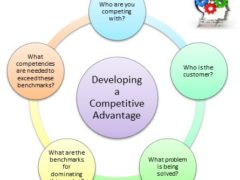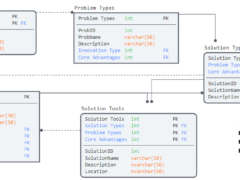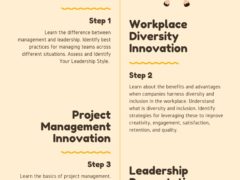Competitive advantage, or business competition, is often treated as a myth. This becomes evident when a ‘seat of the pants’ approach is taken to corporate governance. It also becomes clear when strategy or misalignment increases across the business model. The result is an iterative process where quality, profits, and stakeholder satisfaction deteriorates. A result that no business can afford, let alone survive.
Business Competition – Considerations
HrZone (n.d.) defines competitive advantage as the following:
“Companies with a competitive advantage possess a unique aspect of their proposition. This allows them to achieve greater success than similar businesses in their industry.”

What represents a competitive advantage will depend on the industry, location, economic forces, and regional resources. What maintains competition in one region may not provide an advantage in another region. This difference can be seen halfway across the world.
Michael Porter (1985) lists the following three strategies for building a competitive advantage (cited in HrZone, 2013):
- Cost Leadership: In cost leadership, a firm sets out to become the low cost producer in its industry.
- Differentiation: In a differentiation strategy, a firm seeks to be unique in its industry. It aims to develop dimensions that are widely valued by buyers.
- Focus: The generic strategy of focus rests on the choice of a narrow competitive scope within an industry.
A SWOT analysis can provide some answers to these questions. It often falls short unless internal stakeholders are dedicated to excellence. Half-hearted efforts and outputs might be affordable in non-core areas. However, this can erode profit and business model alignment if not properly evaluated.
Risks to building a competitive advantage within a previous Daas business model (Data Analytics, Inc.) are identified in the SWOT graphic below:
Business Competition – Myths
Several myths of competitive advantage are clarified below:
- Competitive advantage does not exist in a vacuum.Being first has its advantages but only in industries where cost to entry are high. In industries with low costs to entry there is no competitive advantage to being first. First entrant achievements will often be copied.
- Competitive advantage does not exist. This occurs when a company creates a product or service that nobody else wants. It may be better than everyone else’s.Advantages only exist when the product/ service configuration solves a problem customers actually want solved.
- Competitive advantage does not exist by litigating the competition or individuals to keep scandals quiet.Scandals or secrets are tied to business model weaknesses. Treating the symptom (visibility) does not cure the source of the problem. Litigation limits having to respond effectively to the source of the problem.
- Competitive advantage is not about optics.If the business model ‘under the hood’ is defective the business will only function for so long.
- Competitive advantage does not last forever.Advantages and their supporting competencies must change and adapt with the environment to be sustained.
- Competitive advantage is not decided by what internal business stakeholders want.Focusing inward will only drive improvements when an internal stakeholder is dissatisfied. In contrast, focusing on external stakeholders, customers, and the environment supports forecasting future trends and identifying profitable opportunities for growth.
- Competitive advantage is not achieved by being 2nd best. It is achieved by paying careful attention to the environment. It involves analyzing trends and identifying opportunities. These actions lead the pathway to innovative change.
- Competitive advantage can be undermined by focuses on protection instead of innovation. Defense is not a good offense. It is reactive and often protects outdated strategies, technologies, competencies, attitudes, and assumptions. Profitable growth requires an outward focus.
- Competitive Advantage is not a myth. Building a product or service configuration that does not excel in all measures and KPIs is risky. It leaves room for competitors to advance. They could potentially dominate market share.
- Competitive Advantage requires agile leadership. A solely hierarchical or top-down approach to strategy will cause increased costs. It will also lead to more errors as the project scope increases.
Being Agile as a Competitive Advantage
Business value should be defined to include revenue, quality, efficiency, productivity, cost, branding, relationships, and maintained competitive advantage(s). Resources are increasingly scarce. As a result, many of these values are diminished during a recession. The company makes its best attempts to mitigate such impacts.

Risk is summarized as the extent to which the corporation proactively identifies oncoming changes. It also involves responding to them in a timely manner.
Agility, informed by this accurate vision of things to come, is inferred as the solution to address environmental risks. This typically represents a larger corporate competency. It does not necessarily explicate the smaller skill sets or competencies required in the pursuit of agility. Companies that contain the necessary competencies are more readily prepared to address the economic environment during a recession.
Identifying Business Competition Opportunities
Leading a market requires more than just emulating or copying the competition. Defensive strategies (litigation, secrecy, etc.) are also insufficient as these do not guide the development and growth of world-class competencies or product/ service configurations. An outward focus is needed to calibrate strategy with the business’ future vision.
Travis Barker, MPA GCPM
Innovate Vancouver
Innovate Vancouver is a Technology and Business Innovation Consulting service (TBICS)located in Vancouver, BC. Contact Innovate Vancouver to help with your new project.
Resources:
Porter, Michael E., “Competitive Advantage”. 1985, Ch. 1, pp 11-15. The Free Press. New York.
What is a Competitive Advantage? (2013, July 26). Retrieved September 10, 2017, from https://www.hrzone.com/hr-glossary/what-is-a-competitive-advantage
Dann, C., Le Merle, M., & Pencavel, C. (2012, November 27). The Lesson of Lost Value. Retrieved from http://www.strategy-business.com/article/00146?gko=f2c51





